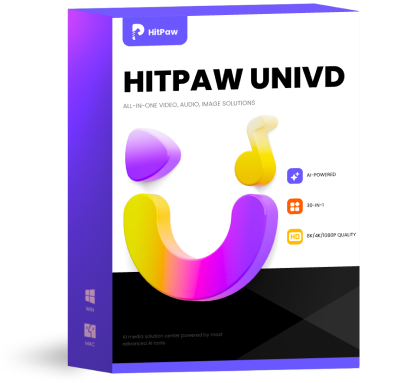Which 4K Video Frame Rate is Best for Ultra-Smooth Footage?
Have you ever noticed how some videos feel smooth while others look a bit choppy? That all comes down to the frame rate. If you're working with 4K video and want to know everything about choosing the 4K video frame rate, this guide will cover all the basics. Let's begin!
Part 1. What Does Frame Rate Mean In a Video?
Frame rate is basically the number of frames or images your video shows per second. It's like how fast you flip through a flipbook to create a sense of motion.
These days, most digital cameras, iPhones, and Android can shoot a video at 24, 30, or 60 frames per second. In fact, some newer models even support 240 fps for super slow motion.
Now, don't mix up the frame rate with 4K resolution! FPS controls the smoothness of your video, while 4K means that your clip has 4000 pixels (3840 x 2160) horizontally. It tells you how sharp and detailed your footage looks.
So, when you combine the 4K video frame rate, you'll get super clear and smooth video that even shows the pores on the person's face.
Part 2. What are the Common Frame Rates for 4K Video?
When shooting a 4K video, your selected frame rate can totally change the feel of your footage. So, here are the common options and what they are best for:
- 24fps: 24fps videos have a slight motion blur effect, which gives you a dramatic and theatrical feel. It is a minimum yet standard frame rate for storytelling and narrative films.

- 30fps: Videos captured in 30fps has natural motion from one image to another. It also keeps the file size more manageable, so you can easily upload it online.
- 48fps: While 48fps is less common, it is now mainly preferred as a "middle ground" between 24fps and 60fps for shooting videos. It adds cinematic character to your videos while still offering smooth motion.
- 60fps: 60fps reduces the motion blur effect in your videos and provides smoother motion. That's why it is considered ideal for action scenes and fast-paced shots.
- 120fps: Videos at 120fps have super smooth motion that's almost like real life, but they need more processing power to handle all that data and take up more storage space due to the large number of images per frame. It also records more details when you slow it down.
- 240fps: This frame rate is ideal for capturing high-definition dramatic slow-motion videos. 240fps requires a higher camera processor to capture the video and the best graphic card for streaming or editing it.
- Variable FPS: Variable frame rate means that the frame rate actively changes during the video playback based on what's happening in the scene. For example, if the clip has a more demanding action scene, the FPS will increase to 60 and lower down during static moments. It does so to maintain an optimal file size.
Part 3. What Is the Best Frame Rate for 4K Video?
How many frames per second is good for 4K? Well, the answer depends on what you are creating. Let's explore the best FPS for different types of videos.
Cinematic Films
For a classic movie look, 24fps is generally a preferred choice. It is mostly linked to cinema's aesthetic and emotional qualities.

However, if you slow down the 24fps video or use it for fast action shots, the scene will become choppy and unprofessional.
YouTube
YouTube supports up to 60fps videos. However, the best frame rate depends on what you are creating. For example, you need 30 fps for talk shows and video podcasts and 60fps for makeup tutorials, montages, and gaming highlights.
The 24fps and 30 fps are best for academic, educational films, fitness, and health content, and 40fps and 60 fps for sports highlights.
Slow Motion
Generally, if you want to get dramatic and cinematic slow-mo, go for 48fps to 60fps, which reduces to 24fps-30fps (50%) when you play the video. For example, when you shoot footage of your pet walking or someone blowing a candle in 48fps or 60fps, it records all the details, like the wag of a tail or the flicker of the candle flame.

For super slow motion, aim for 120fps and 240fps to get the 5x effect at the lowest playback frame rate. The catch is if you use 120-240 fps for water splashing, sports, and action scenes, they make them look dramatic and detailed when slowed down, which the human eye would normally miss.
Time Lapse
Timelapse videos are used to record slow-moving scenes and speed them up to show progress over time. They are commonly captured at 24fps and 30fps, but the key factor is the interval between shots.
To figure out the number of shots, here's a simple formula: multiply your desired video length (in seconds) by your frame rate to figure out how many photos you'll need. Let's say you're capturing a sunset over an hour at 24fps and want a 10-second video, then you have to capture photos (240 x 24). Simple, right?
Keep in mind, though, that some fast movement in your timelapse may appear choppy or jumpy.
Part 4. What are the Key Factors to Consider for 4K Video Frame Rate?
When selecting a frame rate for 4K videos, it's important to consider these key factors when it comes to choosing FPS:
Motion and Smoothness
Higher frame rates (60 FPS and above) create smoother motion, which is great for capturing fast-paced motion. On the other hand, lower frame rates (24fps and 30fps) create a more natural feel in the video but may introduce motion blur.

Shutter Speed
Shutter speed in the time the camera's shutter remains open, and it should complement the frame rate to maintain natural motion blur in 4K videos. The best way is to double the shutter speeds compared to the frame rate. For example, you can choose 1/30s for 60fps.

This balance makes the movement in the video appear more real-like and similar to how our eyes naturally see motion.
Hardware and Performance
Recording 4K at high frame rates demands powerful cameras, processors, and GPUs. Using lower-end devices may cause dropped frames, device overheating, or lag during recording, editing, or playback, which affects the overall FPS 4K video quality.
File Size and Storage
Higher frame rates, 60fps and higher, significantly increase file sizes, which require more storage and higher bandwidth for editing and streaming. To counter this, try compression techniques like H.265 to help manage file sizes without compromising too much on quality.
Playback and Platform Compatibility
Different platforms support varying frame rates, with 24 FPS for films, 30 FPS for TV, and 60+ FPS for gaming. Therefore, consider choosing an FPS that is compatible with display devices to avoid stuttering or unnecessary conversions.
Part 5. How Do I Change the Frame Rate of a Video?
Create Now!If you have a video in 4K but are not satisfied with its frame rate, you can change it using HitPaw VikPea AI Video Enhancer. Here are the steps:
Step 1.Go to the HitPaw site, download the HitPaw VikPea software on your PC, install it, and log in with your username and password.
Step 2.Launch the VikPea software, and click the "Frame Interpolation" option in the left pane.

Step 3.Either drag or drop your 4K video in the editor or click "Import" to upload it from your PC.

Step 4.Once the video loads into the editor, select 2X or 4X frame rate. For example, if your video is 30fps, you can choose 2x to change it to 60fps or 4x to set the frame rate to 120, which is ideal for creating slow-mo clips.

Step 5.Finally, click the "Settings" gear next to "Export," configure the rest of the export settings, and click "Export" again to save the 4K video.

Part 6. FAQs of 4K Video Frame Rate
Q1. Is 4K 120fps possible?
A1. Absolutely, you can record and play 4K 120fps videos on high-end cameras that have super 35mm sensors and Nvidia GeForce RTX 4090. Some monitors and gaming consoles like PlayStation 5 and 5 Pro and Xbox X series can also play video in these settings if you use a high-quality HDMI cable.
Q2. Is 50 or 60 fps better for 4K?
A2. 60fps is normally considered better for video shooting and streaming because it gives you much detail in the scene. Moreover, it offers smoother animations and graphics.
Q3. What's better, 4K 24 or 4K 30?
A3. 4K 24fps is generally preferred for a more cinematic look, while 4K 30fps is better for smoother motion, closer to traditional TV. However, 30fps may also introduce an artificial "soap opera effect" to the footage.
Conclusion on 4K Video Frame Rate
Choosing the correct 4K video frame rate makes all the difference in how smooth, cinematic, or detailed your video looks. Higher frame rates capture fast action, while lower ones create a classic film feel. It all depends on your content and how you want it to be seen. Take the time to experiment, find what works best, and make 4K videos using the appropriate frame rate discussed in this guide so that they look exactly how you imagined.












Home > Learn > Which 4K Video Frame Rate is Best for Ultra-Smooth Footage?
Select the product rating:
Natalie Carter
Editor-in-Chief
My goal is to make technology feel less intimidating and more empowering. I believe digital creativity should be accessible to everyone, and I'm passionate about turning complex tools into clear, actionable guidance.
View all ArticlesLeave a Comment
Create your review for HitPaw articles